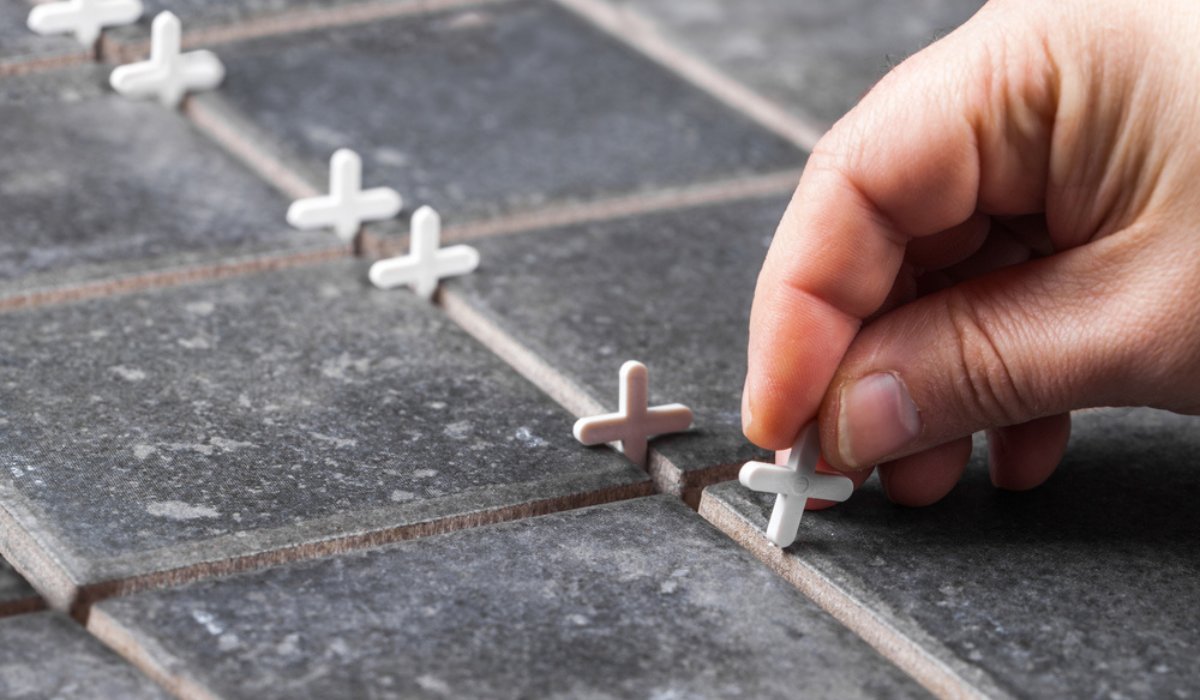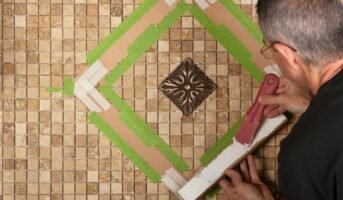Tiles have always been an essential aspect of interior design that serve both structural and aesthetic purposes. But alongside choosing the correct type of tiles for your floor and walls, it is also necessary to know about the importance and role of tile spacers in providing a durable foundation for the placement of tiles.
As the name suggests, tile spacers are materials used in construction that help maintain a uniform gap between the placement of tiles. They are available in several shapes and their sizes vary from 2 mm to 6 mm. Needless to say, tile spacers are indispensable to the layout and strength of your flooring and walls. Here is everything you need to know about tile spacers.
Tile spacers: Key features
Let’s have a look at some of the main physical and functional features of tile spacers.
Size and material composition
Tile spacers are available in sizes ranging from 2 mm to 6 mm. While the smaller varieties are used for walls, the larger ones are required when the tile size is bigger, i.e. in the case of flooring. They are generally made from a variety of plastic that is durable but also lightweight, allowing them to provide a steady support to the tiles.
Shapes
Tile spacers are available in different shapes in order to cater to your aesthetic and functional needs. The available varieties of tile spacers include X-shaped, T-shaped, U-shaped, wedge shaped and TAVY spacers.
Functions
As mentioned above, the primary function of tile spacers is to maintain uniformity in the gaps between tiles when they are being placed. In terms of immediate functionality, these gaps ensure the best results out of the process of grouting by making it less tedious and smoother. The gaps also provide the tiles scope for adequate movement without compromising on durability.
Types of tile spacers
Here we elaborate on the available varieties of tile spacers.
X-shaped
This type of tile spacers have four extensions in the shape of the letter ‘X’. These are used when the design of your tiles is such that they meet at the edges to form a pattern. They ensure an optimal gap in between the tiles to ensure that the pattern does not get distorted.
T-shaped
Unlike its X-shaped counterparts, these tile spacers only have three edges. With two edges sticking out, these spacers are used when the tiles need to be placed in a brick-like pattern, especially in walls.
U-shaped
These spacers are shaped like the letter ‘U’ and have just two edges. Also known as horseshoe spacers, these are best for tiles that form vertical patterns since both the edges of the spacers are used to hold the tiles in place.
Wedge shaped
Wedge shaped spacers are similar to the U-shaped ones in functionality. These are the go-to choice to ensure minimal spacing, specifically for flat surfaces and countertops.
TAVY spacers
TAVY spacers are similar to the X-shaped ones, the only difference being that the ‘X’ is set inside a ring that connects its four corners. Their function is the same as that of X-shaped spacers, but the ring adds to the grip so that it stays more firmly put into the mortar and is easier to remove.
Why use tile spacers?
There are several benefits of using tile spacers. The most obvious benefit of using these is that it eliminates the logistical trouble of spacing tiles at a uniform distance from each other manually. Hence, it saves a lot of time and effort and makes the process less tedious.
Tile spacers ensure that the tiles are placed evenly with respect to each other, while at the same time leaving enough room for proper grouting. Too much grouting can compromise the aesthetic concerns and too less grouting can result in loose tiles.
A uniform gap between the tiles implies a professional and aesthetically pleasing finish for your floor and walls. Moreover, tile spacers are also used keeping in mind the material of the tiles. The spacing should be adequate to allow expansion and contraction of the tiles in the long run without the tiles getting loose or shaky in the process.
See also: How to lay tiles?
Tile spacers cost
Tile spacers are generally available in packs of 100 pieces. Their cost depends mainly on the size, and also on the material. Here is a list of the average prices of a pack of tile spacers according to their sizes.
| Size of tile spacer | Price range in INR |
| 2 mm | 80 – 150 |
| 3 mm | 120 – 185 |
| 4 mm | 140 – 200 |
| 5 mm | 160 – 220 |
| 6 mm | 180 – 225 |
FAQs
Why is it necessary to leave space between tiles?
Leaving space between tiles while placing them is necessary to ensure durability in the grouting and enhance the aesthetic appeal.
How long do tile spacers need to be kept on?
Tile spacers need to be kept on for at least 20 minutes after placing the tiles or until the mortar just starts drying. Leaving them on for too long might prove their removal difficult.
What is the price of tile spacers in India?
A pack of 100 tile spacers can cost anything between Rs 90 - 250.
What sizes are tile spacers available in?
Tile spacers are available in 2 mm, 3 mm, 4 mm, 5 mm and 6 mm varieties.
What are the different shapes of tile spacers?
X-shaped, T-shaped, U-shaped, wedge shaped and TAVY spacers are the different types of tile spacers available in the market.
How do I know what size of tile spacer to use?
The size of tile spacer to be used depends on how much gap is required. While wall tiles and countertops require less gap between tiles for smoothness, you might have to use bigger tile spacers for floors.
How many tile spacers would I need?
The number of tile spacers required depends on the number of tiles. On an average, you would need four times more tile spacers than the number of tiles used.
| Got any questions or point of view on our article? We would love to hear from you. Write to our Editor-in-Chief Jhumur Ghosh at [email protected] |

Riddhi Chatterji is currently pursuing a master’s degree in English literature from University of Delhi. Her meticulous attention to detail and the desire to make a learning experience out of every opportunity has allowed her to work with different forms of textual content for digital platforms, ranging from social media to news desks. When not working or studying , you can find her with her head buried in a book, discovering new music and movies, or out and about exploring the city on the metro.











